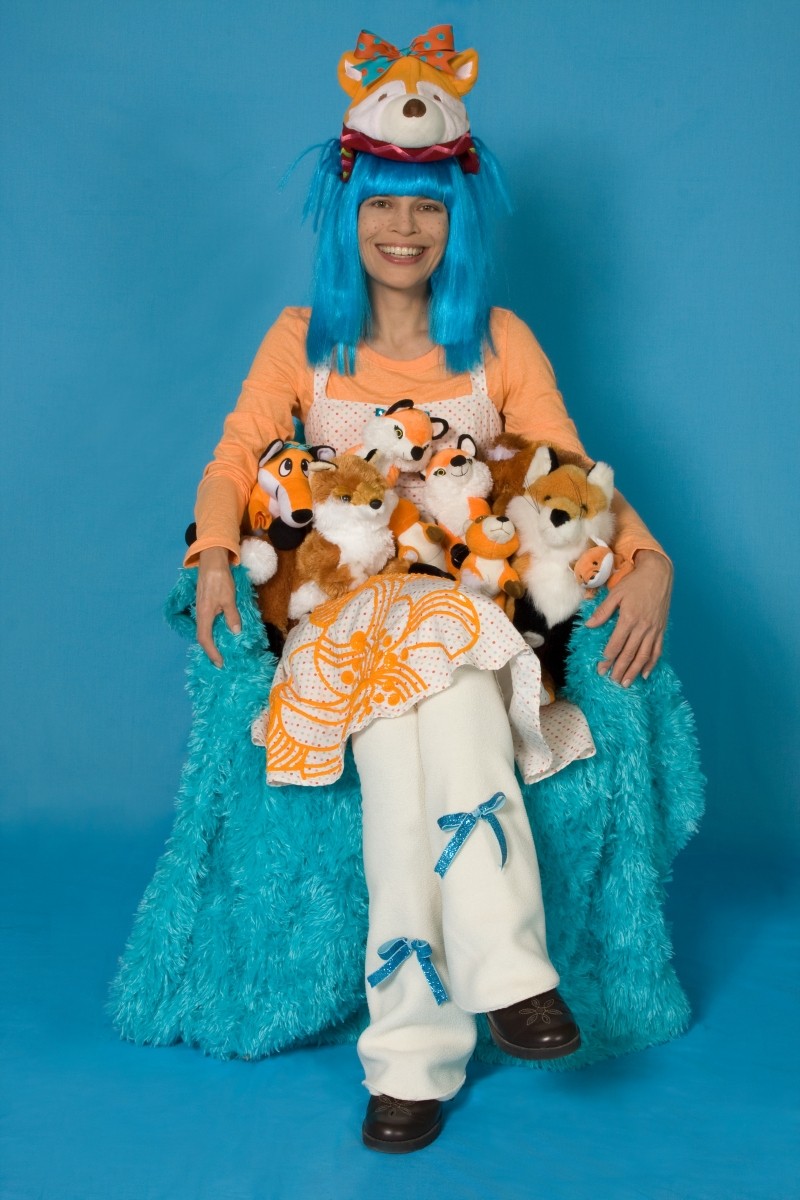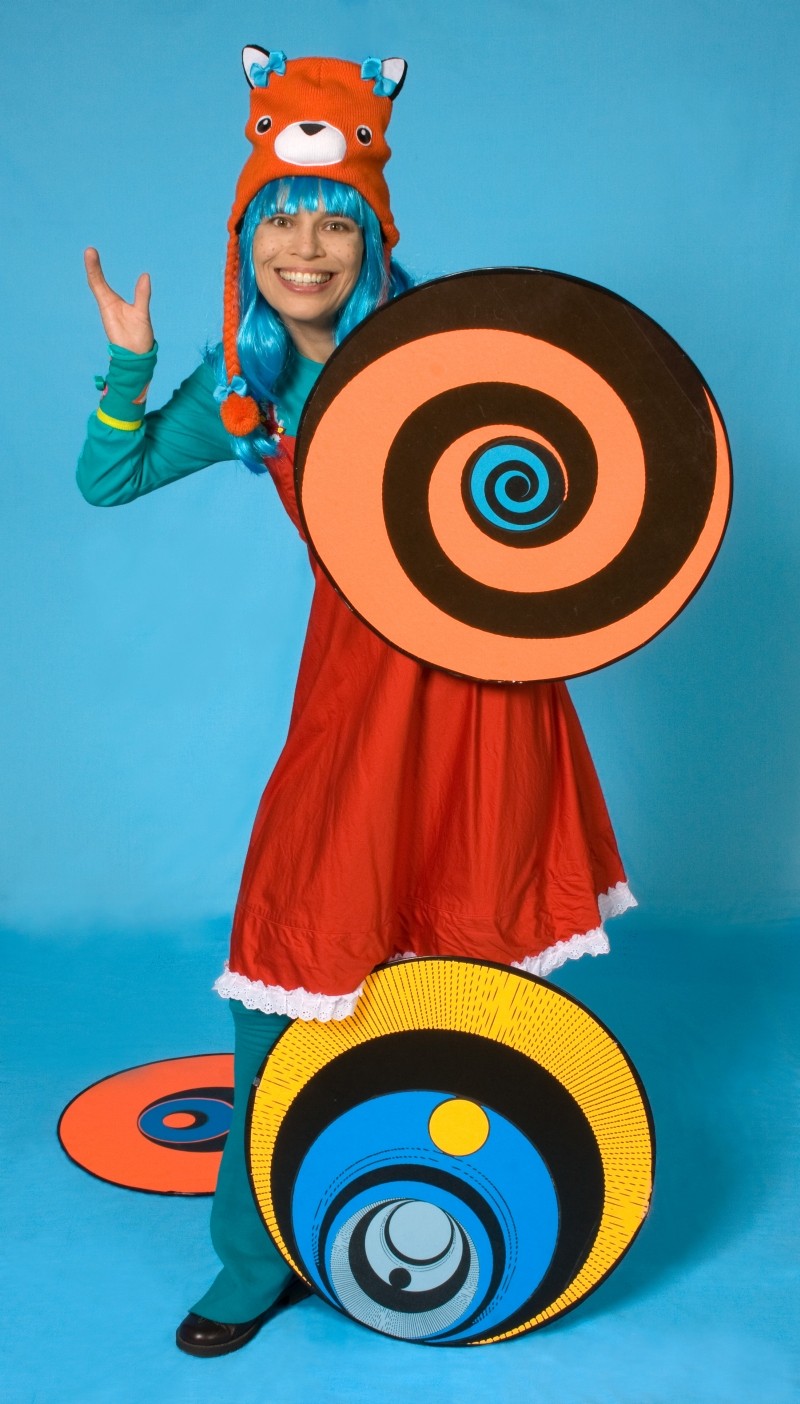FOR 20 YEARS, The Jepson Center has presented I Have Marks to Make, celebrating art's ability to transform lives and shape futures. It's a vastly important and community-focused exhibition that began as a way to showcase artwork from the city's Therapeutics Department.
As it grew, it included art from rehabilitation programs at local hospitals and works from the Savannah-Chatham Public Schools Department of Exceptional Children.
This year, “deformance” artist Liz Gibson takes over the Jepson for two days, combining storytelling, monologues, song, and interactive creation to educate and empower people of all ages.
Born with five fingers on her left hand and two on her right, Gibson’s art explores deformity, difference, and how we relate to it through a personal and poignant lens.
Gibson’s character-driven performance, titled “Be Brave, Leave Your Mark,” centers around the Three-Legged Fox. Adorned in a fanciful frock, vibrant hair with a pair of ears peeking through, The Three-Legged Fox is based on a time in Gibson’s childhood in which she witnessed a fox chew off its own paw to escape a foot trap.
But the Three-Legged Fox’s performance is no 127 Hours—rather, it’s a chance for Gibson to address the naturalness of difference, how people react to it, and entwine a heady subject with accessibility, magic and wonderment.
“Be Brave, Leave Your Mark” is a montage of past performances, including “Learning 2 Tie,” in which Gibson tells her story as child born with seven fingers learning to tie her shoes.
The character of the Three-Legged Fox “uses art as a means to gain friends and gain confidence,” explains Gibson. As a child, she used her artistic talents as a way to relate to peers who were not sure how to handle her deformity.
“As an artist, I’m using this idea from my real experience,” she elaborates. “Art became a catalyst of being shy or feeling insecure. It was this one thing I knew I could excel at that opened me up and made me able to make friends, explore, have a social life, things like that.”
For an interactive twist, Gibson will stage tables throughout the Jepson atrium. Each table features a different image, all composed of paint handprints from Gibson’s two-fingered hand. Unicorns, dragons, and foxes make appearances. There will be several drawings on each table, all “pretty much the same,” says Gibson, but not quite—she’s incorporated a game element of ‘spot the difference’ in the picture, like a lone unicorn winking its eye.
“As an adult, I like to use childhood games, like find the hidden picture, or optical illusions, to try to connect with people, to disarm and help them see that even though somebody is different, they have the same type of feelings as others,” Gibson explains.
The Three-Legged Fox may be centered on childhood experience and have a youthful delivery, but Gibson assures that the performance is meant for all age groups.
“The child character is the most shared character, one that we have all lived in,” she says. “All adults have been children at some time, and all the children in the audience are presently being children. It’s the one character that everyone can experience together.”
As the Fox, Gibson can bring a unique kind of insight and wit to discussing difference and ability.
“The fact that kids are cute, kids do say the funniest things, kids do experience things new—there’s an innocence there,” she observes. “And a serious topic, like having a birth defect...seeing it through a child’s eyes makes it a lot more innocent and makes it more approachable.”
After the performance, Gibson will conclude with an artist talk, focusing on the theme of “Art Teaches Diversity, Art Teaches Tolerance.” Gibson will address, as an individual and a college art professor, how art can change lives—something that’s well worth advocating for.
“So many times, we see art as needing to be justified,” Gibson says. “And art has a great deal to do with our society—therapeutic-wise, as social commentary, as a comment on the shared human experience.”
Gibson hopes to inspire a new generation to find a safe space in artistic expression, just as she did. “This will be a place for the children who come can see how art can have an influence,” she says.



